Discover The FlightBridgeED Podcast
The FlightBridgeED Podcast

The FlightBridgeED Podcast
Author: Long Pause Media | FlightBridgeED
Subscribed: 2,777Played: 57,983Subscribe
Share
© 2025 Long Pause Media | FlightBridgeED, LLC.
Description
The FlightBridgeED Podcast provides convenient, easy-to-understand critical care medical education and current topics related to the air medical industry. Each topic builds on another and weaves together a solid foundation of emergency, critical care, and prehospital medicine.
289 Episodes
Reverse
Episode DescriptionIn this powerful and highly practical episode, Eric Bauer is joined by Dr. Scott Weingart for a deep dive into mechanical ventilation strategy, critical thinking in metabolic acidosis, and the nuanced management of obstructive lung disease. You’ll hear honest, experience-driven insights that challenge outdated protocols and provide a real-world framework for decision-making in high-acuity transport and emergency environments.Together, Eric and Scott unpack what matters when setting minute ventilation for acidotic patients, when and why to abandon rigid tidal volume formulas, and how to navigate the delicate dance of airway management without causing more harm than good. You’ll also hear an unfiltered discussion about ventilation in DKA, PEEP misconceptions, and how to safely manage the crashing COPD or asthmatic patient when time and tolerance are in short supply.Key TakeawaysMinute ventilation must be tailored to context: “one-size-fits-all” protocols often fail in real-world acidotic patients.A tidal volume of 8–10 mL/kg is not only SAFE, it’s often necessary in early transport, especially when facing deadly acidosis.Not all PEEP is good PEEP! Learn when zero is the right number.In obstructive lung patients, the “expiratory phase” isn’t the whole story. Inspiratory flow rate and sedation play crucial roles.End-tidal CO₂ readings must be interpreted in a clinical context. Chasing normalization can kill.Sometimes the best vent setting… is no vent at all. Preserving spontaneous respiration in compensated DKA may save lives.DON'T default to 100% FiO₂. Understand how oxygen strategy influences alveolar recruitment and long-term outcomes.Listen anywhere you get your podcasts or at flightbridgeed.com. While you're there, explore our award-winning critical care courses, trusted by thousands of providers to prepare for advanced certification exams, or to recertify advanced, national, state, and local certifications and licenses.
In this episode of the FlightBridgeED Podcast, Dr. Mike Lauria welcomes back Dr. Nick George to dissect a topic that’s long overdue for critical discussion: airway management in critical care transport—and whether your background matters.Does being a paramedic or a nurse predict first-pass success rate? Does prior training or clinical experience truly change how well you manage airways in high-stakes situations?Drawing from new research involving over 7,800 intubations at a major HEMS program, Dr. George presents data that challenges long-held assumptions and explores the impact of training, experience, and clinical culture on airway outcomes. From the historical roots of EMS to the realities of modern-day prehospital practice, this episode bridges the past, present, and future of one of the most defining and debated skills in critical care.Whether you're placing tubes daily or just entering the field, this episode delivers real insights for every provider level.Listen anywhere you stream podcasts, or at FlightBridgeED.com. While you're there, explore our award-winning, trusted courses, specifically designed for critical care professionals like you.Key TakeawaysSuccess in airway management isn't about your credentials—it’s about training, experience, and repetition.In a study of 7,812 intubations, there was no statistically significant difference in first-pass or last-pass success between nurses and paramedics.A slight initial gap in first-year performance disappears by year three, suggesting a washout effect driven by experience, not title.Historical models and current cultures (like “owning the airway”) influence skill allocation, sometimes more than evidence.Airway success is more than just getting the tube—metrics like DASH-1A aim to measure outcomes that matter (hypoxia, hypotension), even if imperfect.High-quality, consistent training programs—like annual OR intubations and in-situ simulation—are the real equalizers in skill development.The origin of airway obsession in EMS traces back to Peter Safar, whose daughter’s death from an asthma attack helped spark the creation of modern paramedicine.ReferencesGeorge, Nicholas H et al. “Prehospital Endotracheal Intubation Success Rates for Critical Care Nurses Versus Paramedics.” Prehospital emergency care, 1-7. 23 Jan. 2025, doi:10.1080/10903127.2024.2448246https://pubmed.ncbi.nlm.nih.gov/39786721/
In this episode of the FlightBridgeED Podcast, Dr. Mike Lauria is joined by Dr. Nick George, a retrieval and EMS physician currently practicing full-time in Darwin, Australia. Together, they break down the often-overwhelming topic of aortic emergencies in a way that’s brilliantly simple, practical, and immediately applicable for all providers—whether you’re in the ICU, on the flight line, or working your way up in emergency medicine.Dr. George introduces a clean mental model—1 tube, 2 major problems, 3 causes—to guide listeners through the classification, diagnosis, and critical transport considerations for aortic dissections and aneurysms. From understanding penetrating ulcers to navigating hypertensive vs hypotensive presentations, this episode dives deep without drowning you in jargon.We also explore the science behind anti-impulse therapy, challenge long-held dogmas about esmolol vs nicardipine, and reveal eye-opening findings from a two-decade analysis of over 1,000 aortic emergency transports. Whether you’re flying patients to tertiary care, working in rural EDs, or prepping for boards, this episode will sharpen your edge.Available anywhere you listen to podcasts or at FlightBridgeED.com. While you’re there, explore our highly successful, award-winning courses trusted by critical care providers around the world.Key TakeawaysThe aorta can be simplified into “1 tube, 2 problems (tearing or weakening), caused by 3 forces: pressure, pulsatility, and geometry.”Distinguishing between dissection and aneurysm—and whether it’s hypertensive or hypotensive—can guide safe transport decisions, even if you're not making the diagnosis.Dissections may present without pain in up to 30% of cases, underscoring the importance of clinical vigilance and recognizing subtle signs.Classic signs (pulse deficits, BP differentials) are often unreliable. Don’t dismiss vague or mismatched symptoms.Ultrasound, although not definitive, can provide useful data en route—especially in cases of hypotension or ambiguity.Anti-impulse therapy isn't as evidence-backed as we've been taught. Recent studies show nicardipine may be just as effective—and possibly safer—than esmolol.Transport crews must be empowered to advocate for patients when findings don’t line up with the presumed diagnosis.
In this powerful and unfiltered episode, Eric Bauer sits down with Dr. Mark Piehl—pediatric ICU physician, trauma resuscitation expert, and inventor of the LifeFlow device—for a deep conversation that will reshape how you think about blood product administration in trauma care. From pediatric hemorrhagic shock to adult penetrating trauma, from urban EMS to rural ground teams, they unpack the most critical emerging concepts in early resuscitation.You’ll hear eye-opening real-world cases, challenges in implementation, and candid debates about whole blood, plasma vs. PRBCs, and whether saline still has a place. If you’ve ever questioned how fast, how early, or even if we should be administering blood products in the field—this episode is essential listening.Whether you're just getting into critical care or you're a seasoned physician or flight clinician, there’s something here that will challenge you, inspire you, and push your practice forward.🎧 Available anywhere you get your podcasts—or right now at flightbridgeed.com. While you're there, explore our award-winning critical care and certification prep courses trusted by over 30,000 providers worldwide.Contact Mark Piehl at mpiehl@410medical.comKey Takeaways:Early blood product administration in the field dramatically increases survival—especially in penetrating trauma.Whole blood may be ideal, but component therapy (plasma + PRBCs) is a powerful and proven alternative—even in urban EMS with short transport times.Traumatic arrest is not always the end. With witnessed arrest and early transfusion, survival is possible—even likely in the right cases.Shock index is an underused but powerful indicator for when to trigger blood administration, and its value applies to both adults and pediatrics.Volume matters, but so does composition: PRBCs deliver oxygen, plasma helps heal vessels—both are needed, and timing is everything.Saline isn’t dead—there are valid, lifesaving uses for crystalloids in certain TBI and pediatric cases when blood isn’t available.Implementing a blood program builds better clinical teams. It’s not just about saving lives—it sharpens every aspect of your trauma care.
Get ready for a transformative episode of the FlightBridgeED Podcast, where host Eric Bauer teams up with EMS trailblazer Dr. Peter Antevy to dive into the life-saving world of pre-hospital hemorrhage control and blood product administration. Discover how whole blood is reshaping trauma care, doubling survival rates for patients bleeding out from trauma, OB emergencies, or medical crises. Dr. Antevy shares hard-won lessons from Palm Beach County, revealing the vital signs that trigger transfusions, the logistics of launching a blood program, and why resuscitating before intubating is a game-changer. From a child saved on I-95 to a police officer revived after a ricochet wound, these gripping stories bring the science to life. Plus, peek into the future with spray-dried plasma and TBI protocols that could redefine EMS. Whether you’re a seasoned critical care provider or just starting your journey, this episode will ignite your passion for saving lives.Listen anywhere you enjoy podcasts or at flightbridgeed.com, where you can also explore our award-winning courses to fuel your growth in critical care medicine.AS PROMISED, HERE IS DR. ANTEVY'S EMAIL ADDRESS IF YOU WANT TO REACH OUT: peter@handtevy.comKey TakeawaysWhole blood administration in pre-hospital trauma care achieves a ~90% 24-hour survival rate for non-arrest patients with massive hemorrhage, using criteria like systolic BP <70, heart rate ≥110, or end-tidal CO2 <25, emphasizing the need for precise patient selection and rapid intervention within 35 minutes of injury.Prioritizing resuscitation over intubation prevents peri-intubation cardiac arrest in hypotensive trauma patients, as shown by a tenfold reduction in intubation rates in New Orleans’ advanced resuscitative care bundle, highlighting the importance of restoring perfusion first.Plasma or packed red blood cells can be effective alternatives when whole blood isn’t available, but providers must manage citrate-induced hypocalcemia (e.g., with calcium chloride) and use tools like the LifeFlow infuser for rapid transfusion.Networking and advocacy are critical for EMS innovation: connecting with resources like San Antonio’s summits or the SPARC Academy can help overcome barriers to implementing blood programs, empowering providers to drive change in their communities.
In this episode of the FlightBridgeED Podcast, Dr. Michael Lauria sits down with Dr. Bryce Taylor—flight physician, trauma educator, and surgical critical care expert—for a deep dive into one of the most visually shocking and physiologically demanding scenarios in transport medicine: the patient with an open abdomen.From trauma-based damage control laparotomies to the high-stakes management of abdominal compartment syndrome, this episode unpacks the pathophysiology, decision-making, and transport logistics for these fragile patients. Whether you're facing hemostatic chaos, rising pressures, or metabolic unraveling, you'll gain insight into recognizing, stabilizing, and safely transporting these complex cases.You'll learn not just how to manage the wound—but how to manage the why behind the wound.Get this episode wherever you listen to podcasts—or listen directly at flightbridgeed.com. While you're there, explore our award-winning, nationally recognized courses in critical care and emergency medicine. No pressure. Just professional growth.Key Takeaways:Surgical damage control isn’t about definitive repair—it's about temporizing a dying patient. Understanding what was done (packing, foams, drains) matters less than knowing why it was done.Open abdomens are dramatic but misleading. The real threat is usually hidden: bleeding, inflammatory storms, obstructive shock, or silently rising compartment pressures.A vacuum dressing isn't just a dressing—it’s part of the resuscitation strategy. Ensuring it's functioning correctly could mean the difference between success and multi-organ failure.Watch the urine output. Sudden drops are a red flag. It’s your non-invasive window into renal perfusion, evolving abdominal pressures, and even early septic deterioration.Fluid is a drug. Over-resuscitating these patients doesn’t just cause swelling—it can prevent surgical closure, increase infections, and result in months of additional recovery or death.
What if the biggest mistake you’re making with your COPD vent patients isn’t in what you’re doing—but in how fast you’re doing it?In this episode, Eric Bauer takes us deep into the nuances of ventilating a COPD patient in acute respiratory failure. Through a complex case breakdown, Eric challenges conventional thinking around rate, tidal volume, and ventilator pressures, offering critical insights into the obstructive approach.You’ll hear the step-by-step evolution of ventilator management from a real-world interfacility transfer of a hypercapnic, non-compliant COPD patient. Discover why high respiratory rates can be catastrophic, how static compliance and RCexp should influence your strategy, and what “minute ventilation” really means in obstructive physiology.This is more than a case review—it's a clinical recalibration.Key Takeaways:Ventilator strategy must match the pathophysiology—blindly applying high respiratory rates in COPD can worsen outcomes by truncating inspiratory time and impairing ventilation.Minute ventilation is king. Tidal volume and rate must be adjusted not for numbers but to optimize both inspiratory and expiratory phases—especially in patients with increased resistance.Understand the math behind I:E ratios. Your ventilator isn’t a magic box—if you don’t understand how to calculate cycle times, you’ll miss what’s happening with your patient.Static compliance is dynamic. Don’t trust low numbers blindly—evaluate whether your lung is being adequately filled before calling compliance “low.”Auto-PEEP and high-pressure alarms can silently sabotage your tidal volumes if you don't actively adjust them to meet the demands of inspiratory resistance.
Join Eric Bauer and Dr. Mike Lauria as they dissect two challenging critical care transport cases centered on managing respiratory failure in obese and morbidly obese patients. Get ready for a deep dive into advanced physiological concepts, practical tips for troubleshooting ventilator settings, and real-world lessons you can apply to patient care right away. From recognizing unique challenges in the obese population to fine-tuning pressures and understanding how to balance protective ventilation with the realities of chest wall resistance, this episode offers clear, expert-level insights delivered in an approachable way.Key TakeawaysAppreciating that obesity significantly reduces functional residual capacity, requiring thoughtful increases in ventilatory pressures.Using waveform analysis, plateau pressures, and driving pressures to differentiate between obstructive and restrictive components, especially when chronic illnesses overlap with acute processes.Strategic positioning such as ramping or partial proning can be employed to recruit lung volume and improve oxygenation.Recognizing that some patients will need alarm limits and inspiratory pressures far beyond standard protocols—especially when chest wall resistance is extremely high.Incorporating a systematic approach, including incremental changes and close monitoring, rather than relying on one-size-fits-all protocols.Leveraging collaborative practice and direct medical oversight to fine-tune treatment in the face of complex physiology.The FlightBridgeED Podcast has been your go-to resource for critical care, EMS, and emergency medicine education since 2012. Access this episode and the entire library wherever you get your podcasts or by visiting flightbridgeed.com. While you’re there, you can also explore our award-winning courses that have helped countless professionals master advanced practice concepts.We invite you to explore our full range of podcast shows, where our network of FlightBridgeED creators and contributors deliver dynamic discussions on everything from critical care to cutting-edge EMS topics. You’ll also find unique blogs, training resources, and opportunities to engage in our growing community. And don’t forget to check out our upcoming courses and see what’s happening at FAST this year.
In this episode of the FlightBridgeED Podcast, Dr. Michael Lauria and guest Dr. Alex Pfeiffer, a maternal-fetal medicine (MFM) fellow, delve into the critical and complex topic of Placenta Accreta Spectrum Disorder (PAS). With its rapidly evolving complications, this condition demands acute recognition, careful transport coordination, and multidisciplinary care. Together, they unpack the spectrum’s pathophysiology, risk factors, diagnostic strategies, and advanced management protocols essential for critical care and transport teams. Whether you’re a seasoned provider or new to pre-hospital medicine, this episode provides practical knowledge and actionable insights to elevate your clinical practice.Catch this episode and more wherever you listen to podcasts or on our website at flightbridgeed.com. While there, explore our award-winning courses and other free content in our Culture section to advance your career and expand your critical care expertise.TakeawaysAdvanced Insight: The importance of understanding PAS as a spectrum, including the implications of invasive placentation on maternal hemorrhage and the role of multidisciplinary teams in patient outcomes.Practical Application: Early recognition of PAS through clinical and diagnostic signs, such as Doppler flow abnormalities, hypervascularity, and placental lakes, to facilitate timely and appropriate interventions.Foundational Knowledge: Awareness of risk factors like prior cesarean sections, placenta previa, and uterine surgeries that increase the likelihood of PAS and necessitate careful monitoring.References1. Dunbar N, Cooke M, Diab M, Toy P. Transfusion-related acute lung injury after transfusion of maternal blood: a case-control study. Spine (Phila Pa 1976). Nov 1 2010;35(23):E1322-7. doi:10.1097/BRS.0b013e3181e3dad22. Eller AG, Bennett MA, Sharshiner M, et al. Maternal morbidity in cases of placenta accreta managed by a multidisciplinary care team compared with standard obstetric care. Obstet Gynecol. Feb 2011;117(2 Pt 1):331-337. doi:10.1097/AOG.0b013e3182051db23. Eller AG, Porter TF, Soisson P, Silver RM. Optimal management strategies for placenta accreta. Bjog. Apr 2009;116(5):648-54. doi:10.1111/j.1471-0528.2008.02037.x4. Jauniaux E, Bunce C, Grønbeck L, Langhoff-Roos J. Prevalence and main outcomes of placenta accreta spectrum: a systematic review and meta-analysis. Am J Obstet Gynecol. Sep 2019;221(3):208-218. doi:10.1016/j.ajog.2019.01.2335. Murphy EL, Kwaan N, Looney MR, et al. Risk factors and outcomes in transfusion-associated circulatory overload. Am J Med. Apr 2013;126(4):357.e29-38. doi:10.1016/j.amjmed.2012.08.0196. Pachtman S, Koenig S, Meirowitz N. Detecting Pulmonary Edema in Obstetric Patients Through Point-of-Care Lung Ultrasonography. Obstet Gynecol. Mar 2017;129(3):525-529. doi:10.1097/aog.00000000000019097. Padilla CR, Shamshirsaz A. Critical care in obstetrics. Best Pract Res Clin Anaesthesiol. May 2022;36(1):209-225. doi:10.1016/j.bpa.2022.02.0018. Padilla CR, Shamshirsaz AA, Easter SR, et al. Critical Care in Placenta Accreta Spectrum Disorders-A Call to Action. Am J Perinatol. Jul 2023;40(9):988-995. doi:10.1055/s-0043-17616389. Panigrahi AK, Yeaton-Massey A, Bakhtary S, et al. A Standardized Approach for Transfusion Medicine Support in Patients With Morbidly Adherent Placenta. Anesth Analg. Aug 2017;125(2):603-608. doi:10.1213/ane.000000000000205010. Pegu B, Thiagaraju C, Nayak D, Subbaiah M. Placenta accreta spectrum-a catastrophic situation in obstetrics. Obstet Gynecol Sci. May 2021;64(3):239-247. doi:10.5468/ogs.2034511. Roubinian N. TACO and TRALI: biology, risk factors, and prevention strategies. Hematology Am Soc Hematol Educ Program. Nov 30 2018;2018(1):585-594. doi:10.1182/asheducation-2018.1.58512. Sawada M, Matsuzaki S, Mimura K, Kumasawa K, Endo M, Kimura T. Successful conservative management of placenta percreta: Investigation by serial magnetic resonance imaging of the clinical course and a literature review. J Obstet Gynaecol Res. Dec 2016;42(12):1858-1863. doi:10.1111/jog.1312113. Sentilhes L, Kayem G, Chandraharan E, Palacios-Jaraquemada J, Jauniaux E. FIGO consensus guidelines on placenta accreta spectrum disorders: Conservative management. Int J Gynaecol Obstet. Mar 2018;140(3):291-298. doi:10.1002/ijgo.1241014. Shamshirsaz AA, Fox KA, Erfani H, et al. Coagulopathy in surgical management of placenta accreta spectrum. Eur J Obstet Gynecol Reprod Biol. Jun 2019;237:126-130. doi:10.1016/j.ejogrb.2019.04.02615. Silver RM, Barbour KD. Placenta accreta spectrum: accreta, increta, and percreta. Obstet Gynecol Clin North Am. Jun 2015;42(2):381-402. doi:10.1016/j.ogc.2015.01.01416. Simonazzi G, Bisulli M, Saccone G, Moro E, Marshall A, Berghella V. Tranexamic acid for preventing postpartum blood loss after cesarean delivery: a systematic review and meta-analysis of randomized controlled trials. Acta Obstet Gynecol Scand. Jan 2016;95(1):28-37. doi:10.1111/aogs.1279817. Tadayon M, Javadifar N, Dastoorpoor M, Shahbazian N. Frequency, Risk Factors, and Pregnancy Outcomes in Cases with Placenta Accreta Spectrum Disorder: A Case-Control Study. J Reprod Infertil. Oct-Dec 2022;23(4):279-287. doi:10.18502/jri.v23i4.1081418. Tinari S, Buca D, Cali G, et al. Risk factors, histopathology and diagnostic accuracy in posterior placenta accreta spectrum disorders: systematic review and meta-analysis. Ultrasound Obstet Gynecol. Jun 2021;57(6):903-909. doi:10.1002/uog.2218319. Toy P, Gajic O, Bacchetti P, et al. Transfusion-related acute lung injury: incidence and risk factors. Blood. Feb 16 2012;119(7):1757-67. doi:10.1182/blood-2011-08-37093220. Toy P, Popovsky MA, Abraham E, et al. Transfusion-related acute lung injury: definition and review. Crit Care Med. Apr 2005;33(4):721-6. doi:10.1097/01.ccm.0000159849.94750.5121. Warshak CR, Ramos GA, Eskander R, et al. Effect of predelivery diagnosis in 99 consecutive cases of placenta accreta. Obstet Gynecol. Jan 2010;115(1):65-69. doi:10.1097/AOG.0b013e3181c4f12a
Explore the fascinating world of 12-lead ECG interpretation with a special guest, Reid Gilbert-Vass, PA-C, creator of "ECG Lectures with Reid" on YouTube. Reid discusses his journey from Marine Corps logistics to EMS and ultimately becoming a PA specializing in cardiology. Learn his structured, anatomy-driven approach to ECG interpretation, designed to help clinicians at all levels—from beginners to seasoned critical care professionals—develop a deeper understanding of cardiac physiology and electrophysiology.Join the FlightBridgeED Podcast: MDCAST host, Michael Lauria, as they discuss Reed's innovative teaching methods, his passion for lifelong learning, and how his work transforms how clinicians approach ECGs. Don’t miss the practical insights and compelling stories that make this episode a must-listen for anyone in pre-hospital, emergency, or critical care medicine.Listen to the FlightBridgeED Podcast wherever you get your podcasts or at flightbridgeed.com/fbe-podcast. You should also check out ECG Lectures with Reid on YouTube @ECGwithReid. Thank you so much for listening! We couldn't make this podcast with you.TakeawaysUnderstanding ECGs Through AnatomyReid’s step-by-step anatomical approach to ECG interpretation emphasizes the flow of electricity through the heart, helping clinicians localize issues and correlate findings with physiology.The Importance of Lifelong LearningReid’s journey highlights how continual study and curiosity can lead to advanced clinical insights, inspiring providers to deepen their understanding of medical concepts.Practical Application of ECG SkillsReid shares actionable advice from EMS to PA school on applying ECG interpretation skills in high-pressure environments, empowering learners to improve patient care.
In this episode of the FlightBridgeED Podcast, Dr. Michael Lauria dives deep into the art and science of non-invasive positive pressure ventilation (NIPPV), exploring how to optimize CPAP and BiPAP for critically ill patients. Discover advanced techniques to fine-tune ventilator settings, evaluate effectiveness, and reduce mortality and morbidity in COPD, CHF, and other conditions. Learn how to align ventilatory support with patient pathophysiology and understand the tools that predict success or failure in non-invasive ventilation.Whether you're a seasoned critical care provider or just starting to explore advanced practice concepts, this episode offers valuable insights to elevate your understanding of respiratory management.Listen anywhere you get your podcasts or directly on our website at flightbridgeed.com/fbe-podcast. While there, explore our award-winning courses and resources designed to empower healthcare professionals.TakeawaysAdvanced Insight: Using effective PEEP and pressure support in BiPAP can dramatically reduce breathing work and improve outcomes for COPD and CHF patients.Practical Guidance: Titrating CPAP and BiPAP requires continuous evaluation of patient response and adjusting settings like pressure support, PEEP, rise time, and expiratory trigger.Foundational Knowledge: Understanding when and why to choose non-invasive ventilation based on patient pathophysiology is critical for improving care quality.References1. Bello G, De Santis P, Antonelli M. Non-invasive ventilation in cardiogenic pulmonary edema. Ann Transl Med. Sep 2018;6(18):355. doi:10.21037/atm.2018.04.392. Berbenetz N, Wang Y, Brown J, et al. Non-invasive positive pressure ventilation (CPAP or bilevel NPPV) for cardiogenic pulmonary oedema. Cochrane Database Syst Rev. Apr 5 2019;4(4):Cd005351. doi:10.1002/14651858.CD005351.pub43. Carrillo A, Lopez A, Carrillo L, et al. Validity of a clinical scale in predicting the failure of non-invasive ventilation in hypoxemic patients. J Crit Care. Dec 2020;60:152-158. doi:10.1016/j.jcrc.2020.08.0084. Chong CY, Bustam A, Noor Azhar M, Abdul Latif AK, Ismail R, Poh K. Evaluation of HACOR scale as a predictor of non-invasive ventilation failure in acute cardiogenic pulmonary oedema patients: A prospective observational study. Am J Emerg Med. May 2024;79:19-24. doi:10.1016/j.ajem.2024.01.0445. Coleman JM, 3rd, Wolfe LF, Kalhan R. Noninvasive Ventilation in Chronic Obstructive Pulmonary Disease. Ann Am Thorac Soc. Sep 2019;16(9):1091-1098. doi:10.1513/AnnalsATS.201810-657CME6. Conti G, Antonelli M, Navalesi P, et al. Noninvasive vs. conventional mechanical ventilation in patients with chronic obstructive pulmonary disease after failure of medical treatment in the ward: a randomized trial. Intensive Care Med. Dec 2002;28(12):1701-7. doi:10.1007/s00134-002-1478-07. D'Andrea A, Martone F, Liccardo B, et al. Acute and Chronic Effects of Noninvasive Ventilation on Left and Right Myocardial Function in Patients with Obstructive Sleep Apnea Syndrome: A Speckle Tracking Echocardiographic Study. Echocardiography. Aug 2016;33(8):1144-55. doi:10.1111/echo.132258. Duan J, Chen L, Liu X, et al. An updated HACOR score for predicting the failure of noninvasive ventilation: a multicenter prospective observational study. Crit Care. Jul 3 2022;26(1):196. doi:10.1186/s13054-022-04060-79. Duan J, Han X, Bai L, Zhou L, Huang S. Assessment of heart rate, acidosis, consciousness, oxygenation, and respiratory rate to predict noninvasive ventilation failure in hypoxemic patients. Intensive Care Med. Feb 2017;43(2):192-199. doi:10.1007/s00134-016-4601-310. Duan J, Yang J, Jiang L, et al. Prediction of noninvasive ventilation failure using the ROX index in patients with de novo acute respiratory failure. Ann Intensive Care. Dec 5 2022;12(1):110. doi:10.1186/s13613-022-01085-711. Esnault P, Cardinale M, Hraiech S, et al. High Respiratory Drive and Excessive Respiratory Efforts Predict Relapse of Respiratory Failure in Critically Ill Patients with COVID-19. Am J Respir Crit Care Med. Oct 15 2020;202(8):1173-1178. doi:10.1164/rccm.202005-1582LE12. Ferreyro BL, De Jong A, Grieco DL. How to use facemask noninvasive ventilation. Intensive Care Med. May 27 2024;doi:10.1007/s00134-024-07471-y13. Giovannini I, Chiarla C, Boldrini G, Terzi R. Quantitative assessment of changes in blood CO2 tension mediated by the Haldane effect. Journal of Applied Physiology. 1999;87(2):862-866. doi:10.1152/jappl.1999.87.2.86214. Ho KM, Wong K. A comparison of continuous and bi-level positive airway pressure non-invasive ventilation in patients with acute cardiogenic pulmonary oedema: a meta-analysis. Crit Care. 2006;10(2):R49. doi:10.1186/cc486115. Klocke RA. Mechanism and kinetics of the Haldane effect in human erythrocytes. Journal of Applied Physiology. 1973;35(5):673-681. doi:10.1152/jappl.1973.35.5.67316. Leatherman J. Mechanical ventilation for severe asthma. Chest. Jun 2015;147(6):1671-1680. doi:10.1378/chest.14-173317. Lenique F, Habis M, Lofaso F, Dubois-Randé JL, Harf A, Brochard L. Ventilatory and hemodynamic effects of continuous positive airway pressure in left heart failure. Am J Respir Crit Care Med. Feb 1997;155(2):500-5. doi:10.1164/ajrccm.155.2.903218518. Martin JG, Shore S, Engel LA. Effect of continuous positive airway pressure on respiratory mechanics and pattern of breathing in induced asthma. Am Rev Respir Dis. Nov 1982;126(5):812-7. doi:10.1164/arrd.1982.126.5.81219. Nava S, Carbone G, DiBattista N, et al. Noninvasive ventilation in cardiogenic pulmonary edema: a multicenter randomized trial. Am J Respir Crit Care Med. Dec 15 2003;168(12):1432-7. doi:10.1164/rccm.200211-1270OC20. Osadnik CR, Tee VS, Carson-Chahhoud KV, Picot J, Wedzicha JA, Smith BJ. Non-invasive ventilation for the management of acute hypercapnic respiratory failure due to exacerbation of chronic obstructive pulmonary disease. Cochrane Database Syst Rev. Jul 13 2017;7(7):Cd004104. doi:10.1002/14651858.CD004104.pub421. Peter JV, Moran JL, Phillips-Hughes J, Graham P, Bersten AD. Effect of non-invasive positive pressure ventilation (NIPPV) on mortality in patients with acute cardiogenic pulmonary oedema: a meta-analysis. Lancet. Apr 8 2006;367(9517):1155-63. doi:10.1016/s0140-6736(06)68506-122. Rittayamai N, Pravarnpat C, Srilam W, Bunyarid S, Chierakul N. Safety and efficacy of noninvasive ventilation for acute respiratory failure in general medical ward: a prospective cohort study. J Thorac...
In this episode of the FlightBridgeED Podcast: MDCAST, we continue our OB Critical Care Series, focusing on airway management in critically ill obstetric patients. Hosted by Dr. Michael Lauria and featuring special guest Dr. Emily McQuaid-Hanson, Director of OB Anesthesia at the University of New Mexico, this episode delivers essential insights into managing one of the most intimidating and dynamic challenges in pre-hospital and critical care transport medicine.Join us as we discuss modern advancements in airway safety, the physiological challenges of gravid patients, and the critical techniques and tools for managing obstetric airways effectively. Dr. McQuaid-Hanson shares invaluable strategies for pre-oxygenation, intubation, medication selection, and post-intubation care, along with a reminder to approach every airway with preparation and respect—without fear.Whether new to pre-hospital medicine or a seasoned critical care professional, wherever you are on your journey, this episode offers actionable insights and pearls of wisdom.Listen to this podcast on your favorite platform or visit flightbridgeed.com/fbe-podcast. While you're there, explore our award-winning courses and check out our website's Culture section, which offers free content like this podcast, blogs, YouTube videos, TikTok creators, and more! Enjoy, and thank you for being part of the FlightBridgeED community!TakeawaysAdvanced Insights: Modern airway equipment like video laryngoscopes and better preparation have made obstetric airway management comparable in difficulty to other critical care populations, emphasizing preparation and respect for physiological challenges.Clinical Strategies: Proper positioning, effective pre-oxygenation techniques, and having a well-thought-out plan with appropriate tools are key to successful airway management in obstetric patients.Foundational Knowledge: Awareness of the physiological changes during pregnancy—such as reduced functional residual capacity and increased aspiration risk—helps providers anticipate and mitigate challenges during airway management.References1. Aziz MF, Kim D, Mako J, Hand K, Brambrink AM. A retrospective study of the performance of video laryngoscopy in an obstetric unit. Anesth Analg. 2012 Oct;115(4):904-6.2. Ahuja P, Jain D, Bhardwaj N, Jain K, Gainder S, Kang M. Airway changes following labor and delivery in preeclamptic parturients: a prospective case control study. Int J Obstet Anesth. 2018 Feb;33:17-22.3. Bryson PC, Abode K, Zdanski CJ. Emergent airway management in the labor and delivery suite. Int J Pediatr Otorhinolaryngol. 2016 Aug;87:83-6.4. Šklebar I, Habek D, Berić S, Goranović T. AIRWAY MANAGEMENT GUIDELINES IN OBSTETRICS. Acta Clin Croat. 2023 Apr;62(Suppl1):85-90. 5. Dongare PA, Nataraj MS. Anaesthetic management of obstetric emergencies. Indian J Anaesth. 2018 Sep;62(9):704-709.6. Djabatey EA, Barclay PM. Difficult and failed intubation in 3430 obstetric general anaesthetics. Anaesthesia. 2009 Nov;64(11):1168-71.7. McKeen DM, George RB, O'Connell CM, Allen VM, Yazer M, Wilson M, Phu TC. Difficult and failed intubation: Incident rates and maternal, obstetrical, and anesthetic predictors. Can J Anaesth. 2011 Jun;58(6):514-24.8. Hannig KE, Hauritz RW, Jessen C, Herzog J, Grejs AM, Kristensen MS. Managing Known Difficult Airways in Obstetric Patients Using a Flexible Bronchoscope and IRRIS: A Case-Illustrated Guide for Nonexpert Anesthesiologists, without Surgical Backup. Case Rep Anesthesiol. 2021 Oct 8;2021:6778805.9. Preston R, Jee R. Obstetric airway management. Int Anesthesiol Clin. 2014 Spring;52(2):1-28.10. Mushambi MC, Kinsella SM, Popat M, Swales H, Ramaswamy KK, Winton AL, Quinn AC; Obstetric Anaesthetists' Association; Difficult Airway Society. Obstetric Anaesthetists' Association and Difficult Airway Society guidelines for the management of difficult and failed tracheal intubation in obstetrics. Anaesthesia. 2015 Nov;70(11):1286-306.11. Goldszmidt E. Principles and practices of obstetric airway management. Anesthesiol Clin. 2008 Mar;26(1):109-25, vii.12. Kurdi MS, Rajagopal V, Sangineni KS, Thalaiappan M, Grewal A, Gupta S. Recent advances in obstetric anaesthesia and critical care. Indian J Anaesth. 2023 Jan;67(1):19-26.13. Ende H, Varelmann D. Respiratory Considerations Including Airway and Ventilation Issues in Critical Care Obstetric Patients. Obstet Gynecol Clin North Am. 2016 Dec;43(4):699-708.14. Mhyre JM, Healy D. The unanticipated difficult intubation in obstetrics. Anesth Analg. 2011 Mar;112(3):648-52.15. Stopar Pintarič T. Videolaryngoscopy as a primary intubation modality in obstetrics: A narrative review of current evidence. Biomol Biomed. 2023 Nov 3;23(6):949-955.
Join Dr. Mike Lauria and guest Dr. Bryce Taylor, an experienced flight physician, as they delve into the complexities of transporting patients with severe gastrointestinal (GI) bleeding. From the nuances of variceal versus non-variceal bleeds to cutting-edge resuscitation strategies and critical airway management, this episode equips providers with the insights they need for optimal care. Discover evidence-based approaches to managing medications, product resuscitation, and the intricacies of using balloon tamponade devices like Minnesota tubes. Whether you're in EMS, critical care, or just stepping into advanced prehospital medicine, this episode has pearls for every provider.Stream this episode wherever you listen to podcasts, or visit FlightBridgeED.com to explore our award-winning critical care education courses. Your journey to excellence starts here.TAKEAWAYSAdvanced Insight: The pathophysiological understanding of variceal bleeding highlights elevated portal pressures causing venous backflow into superficial veins of the esophagus and stomach, creating high-risk hemorrhage scenarios.Clinical Pearls: Intubating a patient with massive hematemesis requires preparedness for anatomical and physiological challenges. Techniques like SALAD (suction-assisted laryngoscopy) and appropriate suction setups are vital.Foundational Concept: Differentiating upper vs. lower GI bleeds begins with understanding anatomical landmarks like the ligament of Treitz, guiding early diagnosis and management in the field.
In this episode of the FlightBridgeED MDCAST Podcast, Dr. Michael Lauria and Dr. Elizabeth Garchar delve into a vital topic for EMS and critical care: managing preterm labor in transport. They tackle the complexities of diagnosing preterm labor, the nuances of patient risk factors, and the pillars of effective preterm care. Discover how understanding these principles can make a profound difference for both mother and baby, especially when timely, evidence-based intervention is crucial. This is an essential listen for any paramedic, nurse, or medical professional seeking to deepen their knowledge in obstetric critical care and improve their hands-on approach.Listen on your preferred podcast platform or directly from our website at flightbridgeed.com/fbe-podcast. While you’re there, explore our award-winning courses crafted for your continuing education in critical care and emergency medicine.Key Takeaways:Recognize the four pillars of preterm labor management: transport to the appropriate facility, antibiotic administration, antenatal steroids, and magnesium for neuroprotection (before 32 weeks).To prevent neonatal complications, maintain close monitoring during transport and prioritize fetal head control in the event of precipitous delivery.Understanding preterm labor risk factors—such as infection, smoking, limited access to care, and history of preterm births—can help guide critical care decisions.Tocolytic options like calcium channel blockers or beta sympathomimetics are helpful for delaying delivery short-term but require careful consideration of contraindications.The preterm infant’s immediate needs at birth include delayed cord clamping and potential neonatal resuscitation, underscoring the importance of being prepared for rapid response.
Join us for another captivating episode of The FlightBridgeED MDCAST as Dr. Michael Lauria explores trauma medicine's most critical and evolving skill: the finger thoracostomy. Featuring special guest Dr. Bryce Taylor, a seasoned emergency physician, and flight medicine fellow currently doing a retrieval medicine fellowship at the University of Wisconsin Med Flight. This episode takes a deep dive into the nuances of trauma-induced tension pneumothorax and the art of rapid chest decompression in the field.They cover everything from recognizing life-threatening tension physiology to deciding between a needle decompression and a finger thoracostomy and the evolving prehospital protocols that could save lives. Dr. Taylor shares insights on resuscitative ultrasound, operational challenges, and why empirical chest decompression may be the next standard of care for flight and EMS crews. Whether you’re a seasoned critical care provider or new to trauma medicine, this discussion will leave you better equipped to handle the unpredictable.Available wherever you listen to podcasts or directly on our website, flightbridgeed.com. While there, explore our award-winning courses designed to elevate your critical care knowledge and professional practice.TAKEAWAYSUnderstanding the difference between tension pneumothorax and regular pneumothorax is crucial in trauma care.Ultrasound can be a valuable tool for identifying pneumothorax in trauma patients.The choice between needle decompression and finger thoracostomy depends on the clinical scenario and the availability of a sterile environment.Proper identification of landmarks is essential for successful finger thoracostomy.Chest tube placement may be appropriate in a controlled environment with access to sterile equipment. Finger thoracostomy is a crucial intervention in the pre-hospital setting for trauma patients with chest injuries and hemodynamic compromise.Training and education for nurse medics in performing finger thoracostomy are essential for safe and effective implementation.The safety and efficacy of finger thoracostomy in the pre-hospital setting make it a valuable skill for managing trauma patients in critical care transport.The decision to perform a finger thoracostomy should be guided by the presence of hemodynamic compromise and the need for timely intervention in trauma patients with chest injuries.The use of finger thoracostomy as an empiric decompression in polytrauma patients with suspected tension pneumothorax is reasonable and can be performed in parallel with other resuscitative measures.
Welcome to another essential episode of the FlightBridgeED Podcast: MDCAST, where we dive deep into the complexities of critical care and continue our high-risk OB transport conversation. This episode focuses on the often overlooked yet rapidly increasing crisis of hypertensive disorders in pregnancy. Host Dr. Mike Lauria and maternal-fetal medicine specialist Dr. Elizabeth Garchar discuss the full spectrum of hypertensive disorders—from gestational hypertension to the life-threatening condition of eclampsia—and share practical insights on managing these critical patients in prehospital and transport settings.Starting with foundational definitions of specific disorders like pre-eclampsia vs. eclampsia and HELLP syndrome, they explore the physiological mechanisms driving preeclampsia, the increased mortality rates, and why transport providers are seeing more cases in rural or under-resourced facilities. Learn how to distinguish between different diagnoses, manage acute cases in transit, and navigate treatment protocols with a detailed look at magnesium sulfate's role and the right blood pressure control strategies. This episode brings expert-level insight to providers of all backgrounds, from the basics to the most advanced interventions.Listen to The FlightBridgeED Podcast anywhere you enjoy podcasts, or find this episode and more podcasts at https://flightbridgeed.com/explore. While there, explore our award-winning courses that empower pre-hospital and critical care transport medicine professionals to build their critical care expertise.Key Takeaways:Pathophysiology of Preeclampsia: This condition often arises from placental abnormalities that lead to widespread vascular issues, impacting both the mother and fetus.Magnesium Sulfate in Management: Magnesium sulfate is vital for preventing eclampsia and should be monitored for toxicity, especially in patients with reduced kidney function.Identification of Hypertensive Disorders: A blood pressure reading of 160/110 mmHg or greater post-20 weeks' gestation is a significant indicator of hypertensive disorders, warranting immediate medical attention.ReferencesSperling JD, Dahlke JS, Huber WJ, Sibai BM. The role of Headache in the classification and management of hypertensive disorders in pregnancy. Obstetrics and Gynecology. 2015; 126:297-302. Sabai BM. The HELLP syndrome (hemolysis, elevated liver enzymes and low platelets): much ado about nothing? Am J of Obstetrics and Gynecology. 1990; 162:311-6.Steegers EA, von Daselszen P, Duvekot JJ, Pijnenborg R. Pre-Eclampsia. Lancet. 2010; 376:631-44.Redman CW, Sargent IL. Latest advances in understanding preeclampsia. Science. 2005; 308:1592-4von Dadelszen P, Magee LA, Roberts JM. Subclassification of preeclampsia. Hypertens Pregnancy. 2003; 22:143-8Dekker GA, Sibai BM. Etiology and pathogenesis of preeclampsia: current concepts. Am J Obstet Gynecol. 1998; 179; 1359-75. Gillon TE, Pels A, von Dadelszen P, MacDonell K, Magee LA. Hypertensive disorders of pregnancy: a systematic review of international clinical practice guidelines. PloS one. 2014; 9(12): e113715.Gestational Hypertension and Preeclampsia: ACOG Practice Bulletin, Number 222. Obstet Gynecol. 2020 Jun;135(6):e237-e260.
In this episode of our series on respiratory critical care called Every Breath They Take, Dr. Lauria is joined by EM/Critical Care and Flight Physician Brittney Bernardoni as they discuss how to grapple with optimizing lung protective ventilation in ARDS. Lung protective ventilation at 6 cc/kg and maintaining plateau pressures of less than 30 cmH2O have been the cornerstones of invasive respiratory support since the findings of the ARMA trial in 2000. In recent years, some interesting new developments have resulted in changes and improvements in lung protective ventilation strategies. With a particular focus on ventilator "jiu-jitsu," this episode explores the intricate adjustments required to optimize patient care during ARDS management. From ventilator modes and plateau pressure to the impact of PEEP, FiO2, and mechanical power, this episode equips listeners with actionable knowledge for mastering the art of ventilation. Whether in the field or the ICU, the nuanced approaches discussed in this episode will enhance your understanding of optimizing respiratory support in critical patients. Listen to the episode wherever you get your podcasts or directly on our website at https://flightbridgeed.com/explore. While you're there, explore our award-winning courses that have helped thousands of providers clarify and understand the world of critical care transport and pre-hospital medicine.Takeaways• Early care in managing respiratory failure in the transport environment is crucial and can significantly impact patient outcomes.• Lung protective ventilation with low tidal volumes is the foundation of ARDS management.• The choice of ventilation mode (volume control or pressure control) depends on the clinician's comfort and ability to titrate the settings, but neither has proved superior.• Permissive hypercapnia is generally well-tolerated in ARDS patients if the pH exceeds 7.15-7.20.• The initial PEEP setting should be at least eight - several strategies can be used to guide titration.• High FiO2 levels can be detrimental to ischemic organs, alveolar patency, and the lung tissue itself. Aiming for a FiO2 of less than or equal to 60% is important. • Set, check, and change parameters to ensure optimal ventilation!• Driving pressure may be an important factor in patient outcomes.• Mean airway pressure and inspiratory time can improve oxygenation and minimize lung damageReferences1. Ahn HJ, Park M, Kim JA, et al. Driving pressure guided ventilation. Korean J Anesthesiol. Jun 2020;73(3):194-204. doi:10.4097/kja.200412. Amato MB, Meade MO, Slutsky AS, et al. Driving pressure and survival in the acute respiratory distress syndrome. N Engl J Med. Feb 19 2015;372(8):747-55. doi:10.1056/NEJMsa14106393. Azizi BA, Munoz-Acuna R, Suleiman A, et al. Mechanical power and 30-day mortality in mechanically ventilated, critically ill patients with and without Coronavirus Disease-2019: a hospital registry study. J Intensive Care. Apr 6 2023;11(1):14. doi:10.1186/s40560-023-00662-74. Battaglini D, Fazzini B, Silva PL, et al. Challenges in ARDS Definition, Management, and Identification of Effective Personalized Therapies. J Clin Med. Feb 9 2023;12(4)doi:10.3390/jcm120413815. Battaglini D, Sottano M, Ball L, Robba C, Rocco PRM, Pelosi P. Ten golden rules for individualized mechanical ventilation in acute respiratory distress syndrome. J Intensive Med. Jul 2021;1(1):42-51. doi:10.1016/j.jointm.2021.01.0036. Bellani G, Laffey JG, Pham T, et al. Noninvasive Ventilation of Patients with Acute Respiratory Distress Syndrome. Insights from the LUNG SAFE Study. Am J Respir Crit Care Med. Jan 1 2017;195(1):67-77. doi:10.1164/rccm.201606-1306OC7. Briel M, Meade M, Mercat A, et al. Higher vs lower positive end-expiratory pressure in patients with acute lung injury and acute respiratory distress syndrome: systematic review and meta-analysis. Jama. Mar 3 2010;303(9):865-73. doi:10.1001/jama.2010.2188. Brower RG, Matthay MA, Morris A, Schoenfeld D, Thompson BT, Wheeler A. Ventilation with lower tidal volumes as compared with traditional tidal volumes for acute lung injury and the acute respiratory distress syndrome. N Engl J Med. May 4 2000;342(18):1301-8. doi:10.1056/nejm2000050434218019. Chacko B, Peter JV, Tharyan P, John G, Jeyaseelan L. Pressure-controlled versus volume-controlled ventilation for acute respiratory failure due to acute lung injury (ALI) or acute respiratory distress syndrome (ARDS). Cochrane Database Syst Rev. Jan 14 2015;1(1):Cd008807. doi:10.1002/14651858.CD008807.pub210. Chiumello D, Carlesso E, Cadringher P, et al. Lung stress and strain during mechanical ventilation for acute respiratory distress syndrome. Am J Respir Crit Care Med. Aug 15 2008;178(4):346-55. doi:10.1164/rccm.200710-1589OC11. Fuller BM, Ferguson IT, Mohr NM, et al. Lung-Protective Ventilation Initiated in the Emergency Department (LOV-ED): A Quasi-Experimental, Before-After Trial. Ann Emerg Med. Sep 2017;70(3):406-418.e4. doi:10.1016/j.annemergmed.2017.01.01312. Gattinoni L, Collino F, Camporota L. Mechanical power: meaning, uses and limitations. Intensive Care Med. Apr 2023;49(4):465-467. doi:10.1007/s00134-023-06991-313. Harvey CE, Haas NL, Chen CM, et al. Initiation of a Lung Protective Ventilation Strategy in the Emergency Department: Does an Emergency Department-Based ICU Make a Difference? Crit Care Explor. Feb 2022;4(2):e0632. doi:10.1097/cce.000000000000063214. Laffey JG, Bellani G, Pham T, et al. Potentially modifiable factors contributing to outcome from acute respiratory distress syndrome: the LUNG SAFE study. Intensive Care Med. Dec 2016;42(12):1865-1876. doi:10.1007/s00134-016-4571-515. Maddry JK, Mora AG, Perez CA, et al. Improved Adherence to Best Practice Ventilation Management After Implementation of Clinical Practice Guideline (CPG) for United States Military Critical Care Air Transport Teams (CCATTs). Mil Med. Jan 4 2023;188(1-2):e125-e132. doi:10.1093/milmed/usab47416. Maddry JK, Mora AG, Savell SC, et al. Impact of Critical Care Air Transport Team (CCATT) ventilator management on combat mortality. J Trauma Acute Care Surg. Jan 2018;84(1):157-164. doi:10.1097/ta.000000000000160717. Ranieri VM, Rubenfeld GD, Thompson BT, et al. Acute respiratory distress syndrome: the Berlin Definition. Jama. Jun 20 2012;307(23):2526-33. doi:10.1001/jama.2012.566918. Roginski MA, Burney CP, Husson EG, Harper KR, Atchinson PRA, Munson JC. Influence of Critical Care Transport Ventilator Management on Intensive Care Unit Care. Air Med J. Jan-Feb 2022;41(1):96-102. doi:10.1016/j.amj.2021.10.00519. Sahetya SK, Hager DN, Stephens RS, Needham DM, Brower RG. PEEP Titration to Minimize Driving Pressure in Subjects With ARDS: A Prospective Physiological Study. Respir Care. May 2020;65(5):583-589. doi:10.4187/respcare.0710220. Yoshida T, Uchiyama A, Fujino Y. The role of spontaneous effort during mechanical ventilation: normal lung versus injured lung. J Intensive Care. 2015;3:18. doi:10.1186/s40560-015-0083-621. Zaidi SF, Shaikh A, Khan DA, Surani S, Ratnani I. Driving pressure in mechanical ventilation: A review. World J Crit Care Med. Mar 9 2024;13(1):88385. doi:10.5492/wjccm.v13.i1.88385
In this episode of the FlightBridgeED Podcast, part of our "Every Breath They Take" series on respiratory critical care, Dr. Michael Lauria explores whether we truly protect the lungs during mechanical ventilation. While the best evidence suggests keeping tidal volumes at 6 cc/kg and plateau pressures below 30 cm H2O, is that enough? ARDS is a complex lung pathology, and as we unravel its intricacies, there may be more to consider.Join us as we explore the popular concept of driving pressure and introduce the emerging idea of mechanical power. While plateau pressure remains the gold standard, these additional metrics may provide further guidance for adjusting ventilation strategies and minimizing ventilator-induced lung injury, especially in critical care transport settings. Whether you're new to the field or a seasoned professional, this episode offers valuable insights into advanced respiratory management.Listen to FlightBridgeED anywhere you get your podcasts, or visit us at flightbridgeed.com/explore. While there, explore our other fantastic, free content and award-winning courses to help you excel in your critical care practice.TAKEAWAYSMechanical ventilation is a double-edged sword. It can maintain oxygenation and ventilation but can also damage the lungs.Lung protective ventilation prevents ventilator-induced lung injury, especially in acute respiratory distress syndrome (ARDS).Maintaining a plateau pressure below 30 cmH2O is an essential goal in lung protective ventilation.Driving pressure, the difference between plateau pressure and PEEP, is a surrogate for transpulmonary pressure and may be a useful parameter to consider in lung protective ventilation.Keeping driving pressure < 15 cmH2O may be beneficial. Driving pressure might be helpful in titrating peep and optimizing lung recruitment, as well as in identifying patients who may benefit from smaller tidal volumes, even if the plateau pressure is below 30.Mechanical power, which represents the energy delivered to the lung over time, is a newer concept that requires further research to determine its role in lung protective ventilation.Optimizing the ventilatory and inspiratory flow rates (in addition to peep, plateau pressure, and tidal volume) may help reduce mechanical power below 17-22 J/min.REFERENCESAmato MB, Meade MO, Slutsky AS, et al. Driving pressure and survival in the acute respiratory distress syndrome. N Engl J Med. Feb 19 2015;372(8):747-55. doi:10.1056/NEJMsa1410639Azizi BA, Munoz-Acuna R, Suleiman A, et al. Mechanical power and 30-day mortality in mechanically ventilated, critically ill patients with and without Coronavirus Disease-2019: a hospital registry study. J Intensive Care. Apr 6 2023;11(1):14. doi:10.1186/s40560-023-00662-7Battaglini D, Fazzini B, Silva PL, et al. Challenges in ARDS Definition, Management, and Identification of Effective Personalized Therapies. J Clin Med. Feb 9 2023;12(4)doi:10.3390/jcm12041381Battaglini D, Sottano M, Ball L, Robba C, Rocco PRM, Pelosi P. Ten golden rules for individualized mechanical ventilation in acute respiratory distress syndrome. J Intensive Med. Jul 2021;1(1):42-51. doi:10.1016/j.jointm.2021.01.003Bellani G, Laffey JG, Pham T, et al. Epidemiology, Patterns of Care, and Mortality for Patients With Acute Respiratory Distress Syndrome in Intensive Care Units in 50 Countries. Jama. Feb 23 2016;315(8):788-800. doi:10.1001/jama.2016.0291Bugedo G, Retamal J, Bruhn A. Driving pressure: a marker of severity, a safety limit, or a goal for mechanical ventilation? Crit Care. Aug 4 2017;21(1):199. doi:10.1186/s13054-017-1779-xChiumello D, Froio S, Mistraletti G, et al. Gas exchange, specific lung elastance and mechanical power in the early and persistent ARDS. J Crit Care. Feb 2020;55:42-47. doi:10.1016/j.jcrc.2019.09.022Coppola S, Caccioppola A, Froio S, et al. Effect of mechanical power on intensive care mortality in ARDS patients. Crit Care. May 24 2020;24(1):246. doi:10.1186/s13054-020-02963-xCressoni M, Cadringher P, Chiurazzi C, et al. Lung inhomogeneity in patients with acute respiratory distress syndrome. Am J Respir Crit Care Med. Jan 15 2014;189(2):149-58. doi:10.1164/rccm.201308-1567OCDuan J, Wang S, Liu P, et al. Early prediction of noninvasive ventilation failure in COPD patients: derivation, internal validation, and external validation of a simple risk score. Ann Intensive Care. Sep 30 2019;9(1):108. doi:10.1186/s13613-019-0585-9Gattinoni L, Collino F, Camporota L. Mechanical power: meaning, uses and limitations. Intensive Care Med. Apr 2023;49(4):465-467. doi:10.1007/s00134-023-06991-3Gattinoni L, Marini JJ, Pesenti A, Quintel M, Mancebo J, Brochard L. The "baby lung" became an adult. Intensive Care Med. May 2016;42(5):663-673. doi:10.1007/s00134-015-4200-8Gattinoni L, Tonetti T, Quintel M. Regional physiology of ARDS. Crit Care. Dec 28 2017;21(Suppl 3):312. doi:10.1186/s13054-017-1905-9Goligher EC, Dres M, Patel BK, et al. Lung- and Diaphragm-Protective Ventilation. Am J Respir Crit Care Med. Oct 1 2020;202(7):950-961. doi:10.1164/rccm.202003-0655CPGuérin C, Papazian L, Reignier J, Ayzac L, Loundou A, Forel JM. Effect of driving pressure on mortality in ARDS patients during lung protective mechanical ventilation in two randomized controlled trials. Crit Care. Nov 29 2016;20(1):384. doi:10.1186/s13054-016-1556-2Ogbu OC, Martin GS, Murphy DJ. A Few Milliliters of Prevention: Lung-Protective Ventilation Decreases Pulmonary Complications. Crit Care Med. Oct 2015;43(10):2263-4. doi:10.1097/ccm.0000000000001234Paudel R, Trinkle CA, Waters CM, et al. Mechanical Power: A New Concept in Mechanical Ventilation. Am J Med Sci. Dec 2021;362(6):537-545. doi:10.1016/j.amjms.2021.09.004Sahetya SK, Hager DN, Stephens RS, Needham DM, Brower RG. PEEP Titration to Minimize Driving Pressure in Subjects With ARDS: A Prospective Physiological Study. Respir Care. May 2020;65(5):583-589. doi:10.4187/respcare.07102Serpa Neto A, Deliberato RO, Johnson AEW, et al. Mechanical power of ventilation is associated with mortality in critically ill patients: an analysis of patients in two observational cohorts. Intensive Care Med. Nov 2018;44(11):1914-1922. doi:10.1007/s00134-018-5375-6Simonis FD, Binnekade JM, Braber A, et al. PReVENT--protective ventilation in patients without ARDS at start of ventilation: study protocol for a randomized controlled trial. Trials. May 24 2015;16:226. doi:10.1186/s13063-015-0759-1Tongyoo S, Viarasilpa T, Deawtrakulchai P, Subpinyo S, Suppasilp C, Permpikul C. Comparison of limited driving pressure ventilation and low tidal volume strategies in adults with acute respiratory failure on mechanical ventilation: a randomized controlled trial. Ther Adv Respir Dis. Jan-Dec 2024;18:17534666241249152. doi:10.1177/17534666241249152van Meenen DMP, Algera AG, Schuijt MTU, et al. Effect of mechanical power on mortality in invasively ventilated ICU patients without the acute respiratory distress syndrome: An analysis of three randomised clinical trials. Eur J Anaesthesiol. Jan 1 2023;40(1):21-28. doi:10.1097/eja.0000000000001778Wu HP, Chu CM, Chuang LP, et al. The Association between Mechanical Power and Mortality in Patients with Pneumonia Using Pressure-Targeted Ventilation. Diagnostics (Basel). Oct 10 2021;11(10)doi:10.3390/diagnostics11101862Yehya N, Hodgson CL, Amato MBP, et al. Response to Ventilator Adjustments for Predicting Acute Respiratory Distress Syndrome Mortality. Driving Pressure versus Oxygenation. Ann Am Thorac Soc. May 2021;18(5):857-864. doi:10.1513...
In this compelling episode of the FlightBridgeED Podcast, Dr. Michael Lauria delves into one of the most critical yet underappreciated aspects of emergency and critical care medicine: maternal sepsis and septic shock. As maternal mortality rates rise across the U.S., critical care transport providers are increasingly faced with the challenge of managing septic mothers and post-partum patients. Dr. Lauria, alongside special guest Dr. Elizabeth Garchar, MD, FACOG, an OB/GYN and Maternal Fetal Medicine (MFM) specialist who has a particular interest in obstetric critical care, breaks down the latest evidence and best practices for diagnosing and treating septic shock in obstetrical patients.Explore the pathophysiology of sepsis, the role of cytokine release in organ dysfunction, and the management strategies for ensuring maternal and fetal well-being. Whether you're in pre-hospital care, the ICU, or critical care transport, this episode is packed with insights for all levels of healthcare providers.Key Takeaways: Early Sepsis Detection & Organ Impact: Sepsis isn't just about blood pressure. Inflammatory cytokines can cause brain dysfunction (septic encephalopathy), kidney damage, and even septic cardiomyopathy. Be vigilant with these patients.Unique Obstetric Considerations: Pregnancy causes physiological changes that can mask early sepsis signs. Differentiating between normal pregnancy symptoms and systemic inflammatory response can be challenging but is crucial for survival.Aggressive Management is Key: Whether it's antibiotics, fluid resuscitation, or early norepinephrine administration, aggressively managing septic obstetric patients can significantly improve outcomes.Antibiotics First, Always: Ensure that septic patients receive broad-spectrum antibiotics within the first hour. It’s a key factor in preventing further deterioration.Fluid Responsiveness: Use dynamic assessments to determine fluid responsiveness instead of blindly administering large amounts of fluid.Pressors are Safe: Norepinephrine is a safe and recommended first-line vasopressor for septic pregnant patients. Don't hesitate to use it.Listen anywhere you get your podcasts or directly from our website at flightbridgeed.com. While you’re there, be sure to explore our award-winning courses designed to elevate your critical care expertise.---References1. Albright CM, Ali TN, Lopes V, Rouse DJ, Anderson BL. The Sepsis in Obstetrics Score: a model to identify risk of morbidity from sepsis in pregnancy. Am J Obstet Gynecol. Jul 2014;211(1):39 e1-8. doi:10.1016/j.ajog.2014.03.0102. Barton JR, Sibai BM. Severe sepsis and septic shock in pregnancy. Obstet Gynecol. Sep 2012;120(3):689-706. doi:10.1097/AOG.0b013e318263a52d3. Bauer ME, Bateman BT, Bauer ST, Shanks AM, Mhyre JM. Maternal sepsis mortality and morbidity during hospitalization for delivery: temporal trends and independent associations for severe sepsis. Anesth Analg. Oct 2013;117(4):944-950. doi:10.1213/ANE.0b013e3182a009c34. Chau A, Tsen LC. Fetal optimization during maternal sepsis: relevance and response of the obstetric anesthesiologist. Curr Opin Anaesthesiol. Jun 2014;27(3):259-66. doi:10.1097/ACO.00000000000000775. Creanga AA, Syverson C, Seed K, Callaghan WM. Pregnancy-Related Mortality in the United States, 2011-2013. Obstet Gynecol. Aug 2017;130(2):366-373. doi:10.1097/AOG.00000000000021146. Dellinger RP, Rhodes A, Evans L, et al. Surviving Sepsis Campaign. Crit Care Med. Apr 1 2023;51(4):431-444. doi:10.1097/CCM.00000000000058047. Evans L, Rhodes A, Alhazzani W, et al. Executive Summary: Surviving Sepsis Campaign: International Guidelines for the Management of Sepsis and Septic Shock 2021. Crit Care Med. Nov 1 2021;49(11):1974-1982. doi:10.1097/CCM.00000000000053578. Fan S-R, Liu P, Yan S-M, Huang L, Liu X-P. New Concept and Management for Sepsis in Pregnancy and the Puerperium. Maternal-Fetal Medicine. 2020;2(4):231-239. doi:10.1097/fm9.00000000000000589. Guarino M, Perna B, Cesaro AE, et al. 2023 Update on Sepsis and Septic Shock in Adult Patients: Management in the Emergency Department. J Clin Med. Apr 28 2023;12(9)doi:10.3390/jcm1209318810. Guinn DA, Abel DE, Tomlinson MW. Early goal directed therapy for sepsis during pregnancy. Obstet Gynecol Clin North Am. Sep 2007;34(3):459-79, xi. doi:10.1016/j.ogc.2007.06.00911. Joseph J, Sinha A, Paech M, Walters BN. Sepsis in pregnancy and early goal-directed therapy. Obstet Med. Sep 2009;2(3):93-9. doi:10.1258/om.2009.09002412. Knowles SJ, O'Sullivan NP, Meenan AM, Hanniffy R, Robson M. Maternal sepsis incidence, aetiology and outcome for mother and fetus: a prospective study. BJOG. Apr 2015;122(5):663-71. doi:10.1111/1471-0528.1289213. Kumar A, Roberts D, Wood KE, et al. Duration of hypotension before initiation of effective antimicrobial therapy is the critical determinant of survival in human septic shock. Crit Care Med. Jun 2006;34(6):1589-96. doi:10.1097/01.CCM.0000217961.75225.E914. Oud L, Watkins P. Evolving trends in the epidemiology, resource utilization, and outcomes of pregnancy-associated severe sepsis: a population-based cohort study. J Clin Med Res. Jun 2015;7(6):400-16. doi:10.14740/jocmr2118w15. Plante LA. Management of Sepsis and Septic Shock for the Obstetrician-Gynecologist. Obstet Gynecol Clin North Am. Dec 2016;43(4):659-678. doi:10.1016/j.ogc.2016.07.01016. Plante LA, Pacheco LD, Louis JM. SMFM Consult Series #47: Sepsis during pregnancy and the puerperium. Am J Obstet Gynecol. Apr 2019;220(4):B2-b10. doi:10.1016/j.ajog.2019.01.21617. Sawyer RG, Claridge JA, Nathens AB, et al. Trial of short-course antimicrobial therapy for intraabdominal infection. N Engl J Med. May 21 2015;372(21):1996-2005. doi:10.1056/NEJMoa141116218. Say L, Chou D, Gemmill A, et al. Global causes of maternal death: a WHO systematic analysis. Lancet Glob Health. Jun 2014;2(6):e323-33. doi:10.1016/S2214-109X(14)70227-X19. Shields A, de Assis V, Halscott T. Top 10 Pearls for the Recognition, Evaluation, and Management of Maternal Sepsis. Obstet Gynecol. Aug 1 2021;138(2):289-304. doi:10.1097/aog.000000000000447120. Snyder CC, Barton JR, Habli M, Sibai BM. Severe sepsis and septic shock in pregnancy: indications for delivery and maternal and perinatal outcomes. J Matern Fetal Neonatal Med. Mar 2013;26(5):503-6. doi:10.3109/14767058.2012.73922121. Timezguid N, Das V, Hamdi A, et al. Maternal sepsis during pregnancy or the postpartum period requiring intensive care admission. Int J Obstet Anesth. Jan 2012;21(1):51-5. doi:10.1016/j.ijoa.2011.10.00922. van Dillen J, Zwart J, Schutte J, van Roosmalen J. Maternal sepsis: epidemiology, etiology and outcome. Curr Opin Infect Dis. Jun 2010;23(3):249-54. doi:10.1097/QCO.0b013e328339257c23. Wang T, Liao L, Tang X, Li B, Huang S. Effects of different vasopressors on the contraction of the superior mesenteric artery and uterine artery in rats during late pregnancy. BMC Anesthesiol. Jun 30 2021;21(1):185. doi:10.1186/s12871-021-01395-624. Xu S, Shen X, Liu S, Yang J, Wang X. Efficacy and safety of norepinephrine versus phenylephrine for the management of maternal hypotension during cesarean delivery with spinal anesthesia: A systematic review and m...
In this episode of the FlightBridgeED Podcast: MDCAST, Dr. Michael Lauria is joined by Dr. Elizabeth Garchar, MD, FACOG, an OB/GYN and Maternal Fetal Medicine (MFM) specialist who has a particular interest in obstetric critical care and is unique in that she flies regularly with ourcritical care transport teams as a retrieval OBGYN/MFM. They are also joined by Dr. Alixandria Pfeiffer, an MFM Fellow at the University of Texas in San Antonio. Together, they dive into the complex and underexplored world of obstetric critical care transport. With maternal mortality rates on the rise in the U.S., this episode addresses the vital role critical care transport teams play in improving outcomes for high-risk pregnancies.The discussion focuses on monitoring pregnant patients during transport, exploring topics such as flight physiology, continuous fetal monitoring (CFM), and the challenges posed by different transport environments. Dr. Pfeiffer shares her groundbreaking research on the feasibility of fetal monitoring during transport and its potential impact on both maternal and fetal outcomes.Key Takeaways:In obstetric transport, continuous fetal monitoring (CFM) is feasible and can provide critical insights during maternal transport, though it poses unique challenges depending on transport type (flight, ground).Flight transport often results in a slight decrease in maternal oxygen saturation and systolic blood pressure, suggesting the need for standardized oxygen therapy protocols during transport.Understanding fetal physiology and monitoring techniques is essential, especially in high-risk pregnancy transports where the health of both mother and baby is at stake.Whether you're a seasoned critical care provider or just beginning your journey in EMS or critical care transport medicine, this episode delivers insights into the practical realities of OB transport.Listen now on any podcast platform or directly from our website at flightbridgeed.com. While you're there, explore our highly successful and award-winning courses, designed to elevate your career in critical care medicine. Thank you so much for listening! We couldn't make this podcast without you.---ReferencesPfeiffer AF, Munter BT, Munoz J, Ramsey PS, Byrne JJ. Maternal Physiologic Adaptations During Transport. Am J Obstet Gynecol. 2023; 228(1): S259-S260.Pfeiffer AF, Munoz JL, Neuhoff BK, Boyd AR, Moreno A, Ramsey PS. Fetal Cardiotocographic Monitoring During Maternal Transport. Am J Obstet Gynecol. 2022; 226(1): S609.Foley MR, Strong, Jr TH, Garite TJ. eds. Obstetric Intensive Care Manual, 5e. McGraw Hill; . Accessed May 24, 2022. https://obgyn.mhmedical.com/content.aspx?bookid=2379§ionid=185956675H.R.315 - Improving Access to Maternity Care Act, (2018). Available at: https://www.congress.gov/bill/115th-congress/house-bill/315.


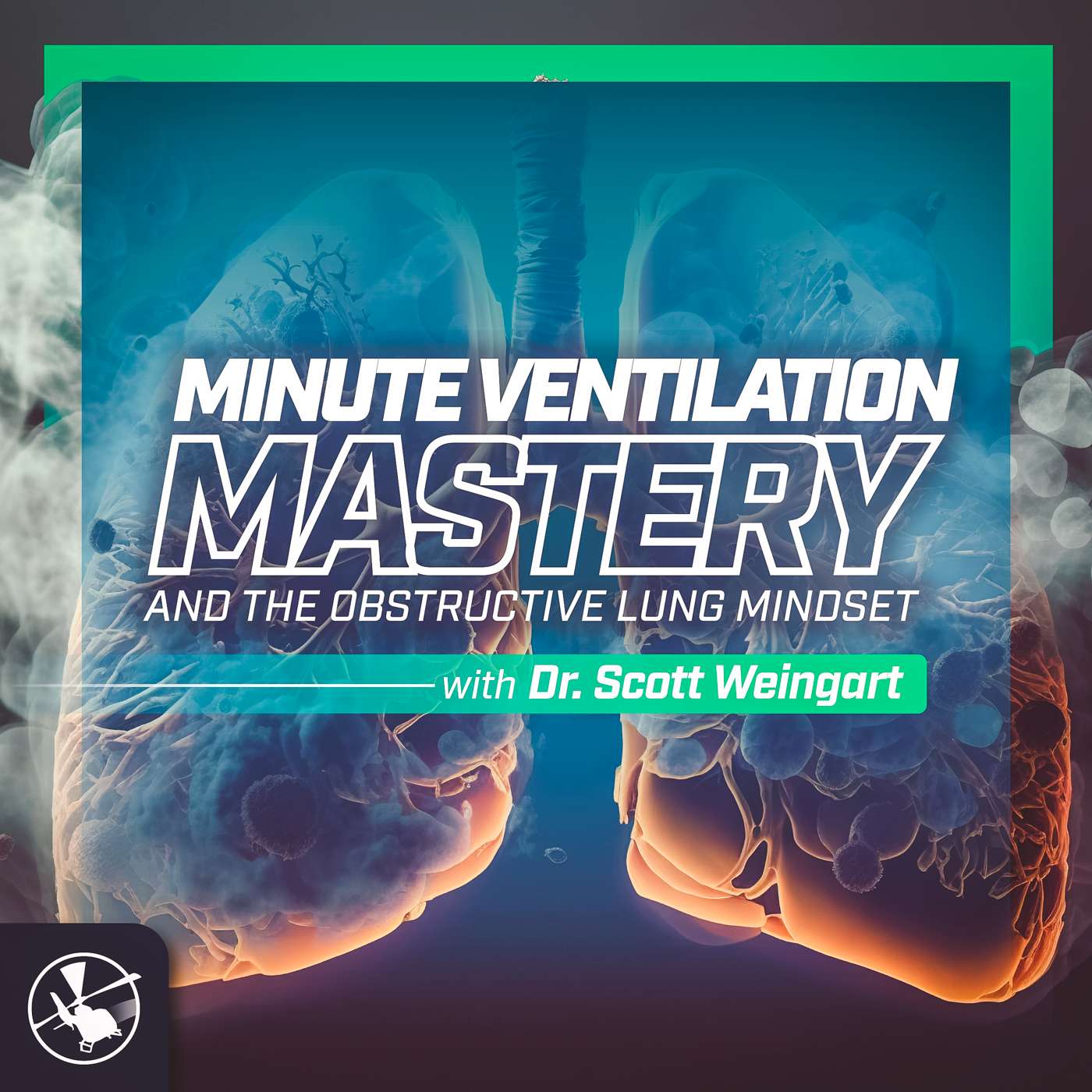
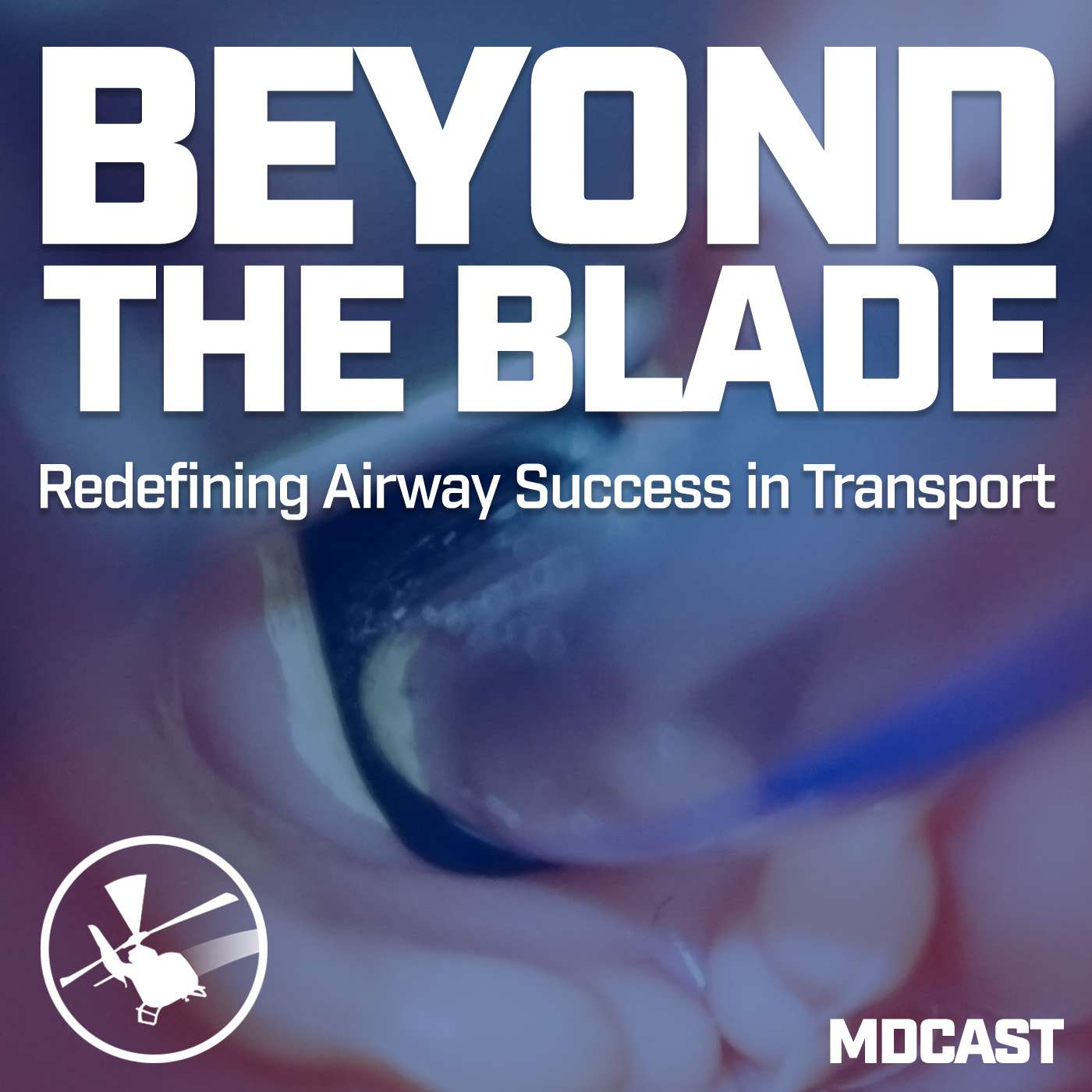
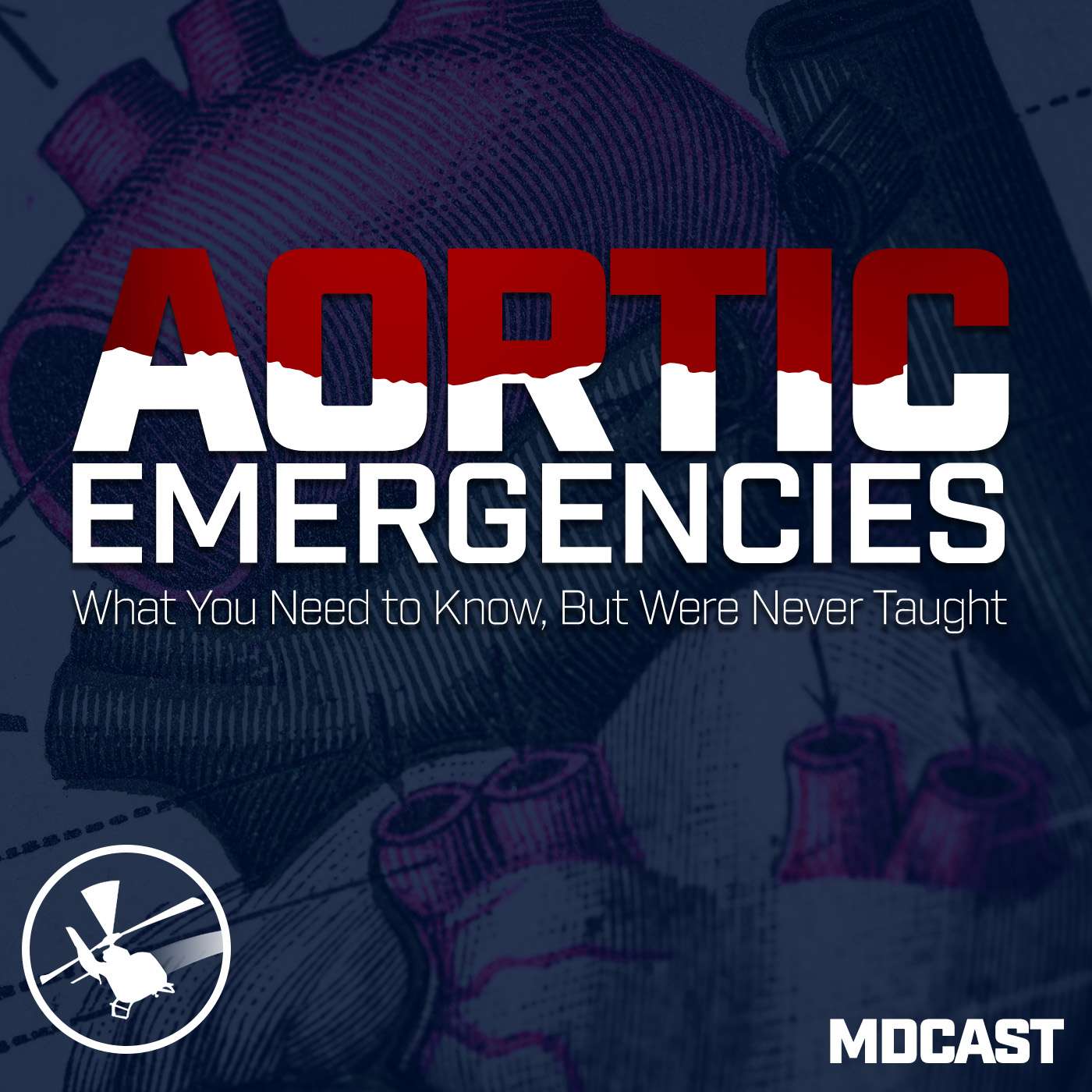


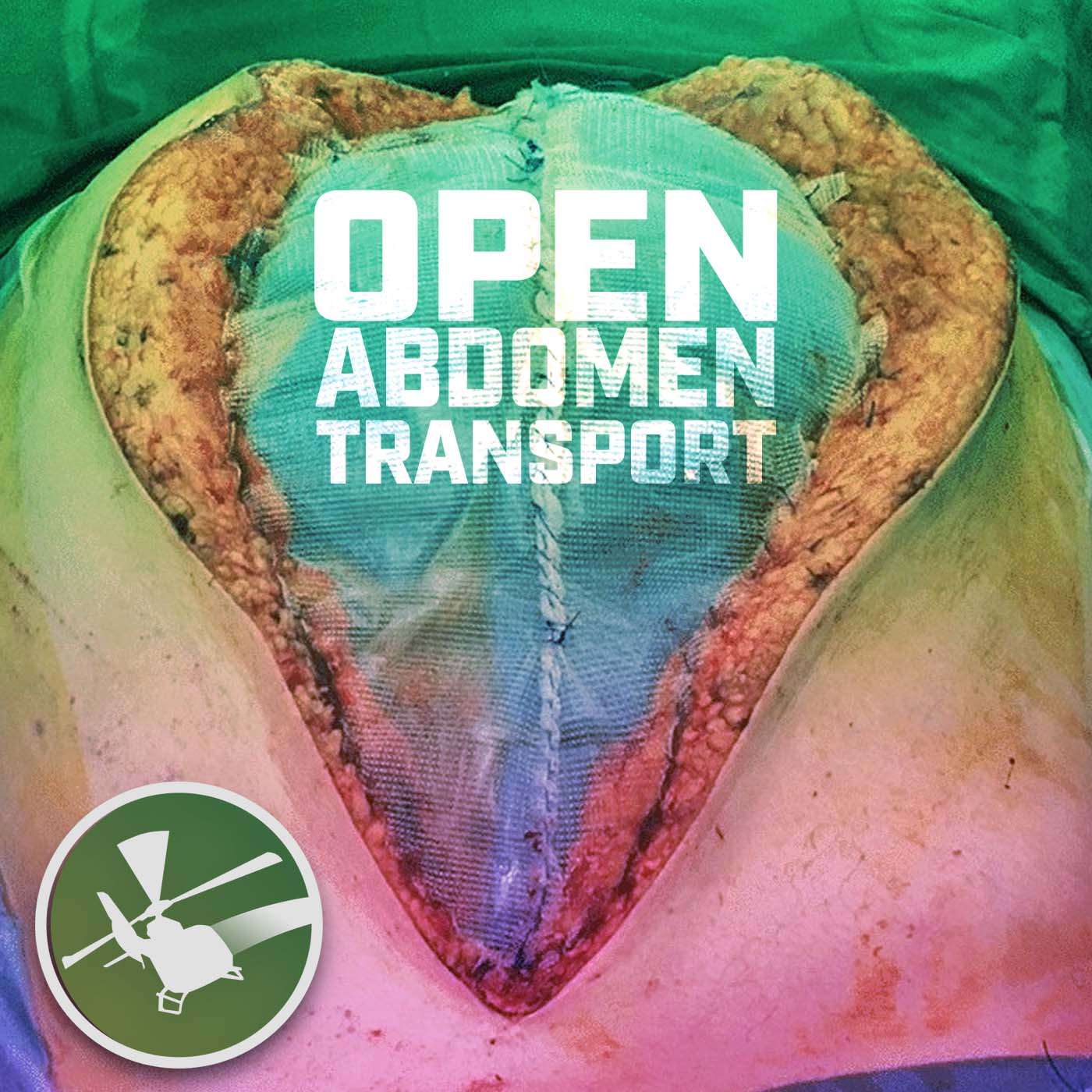
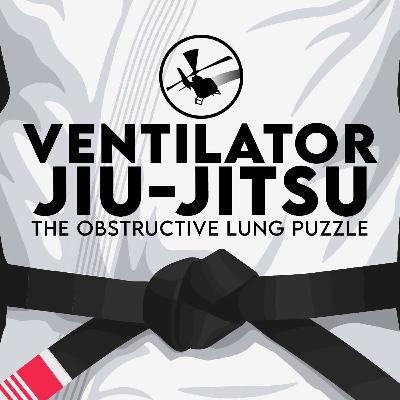

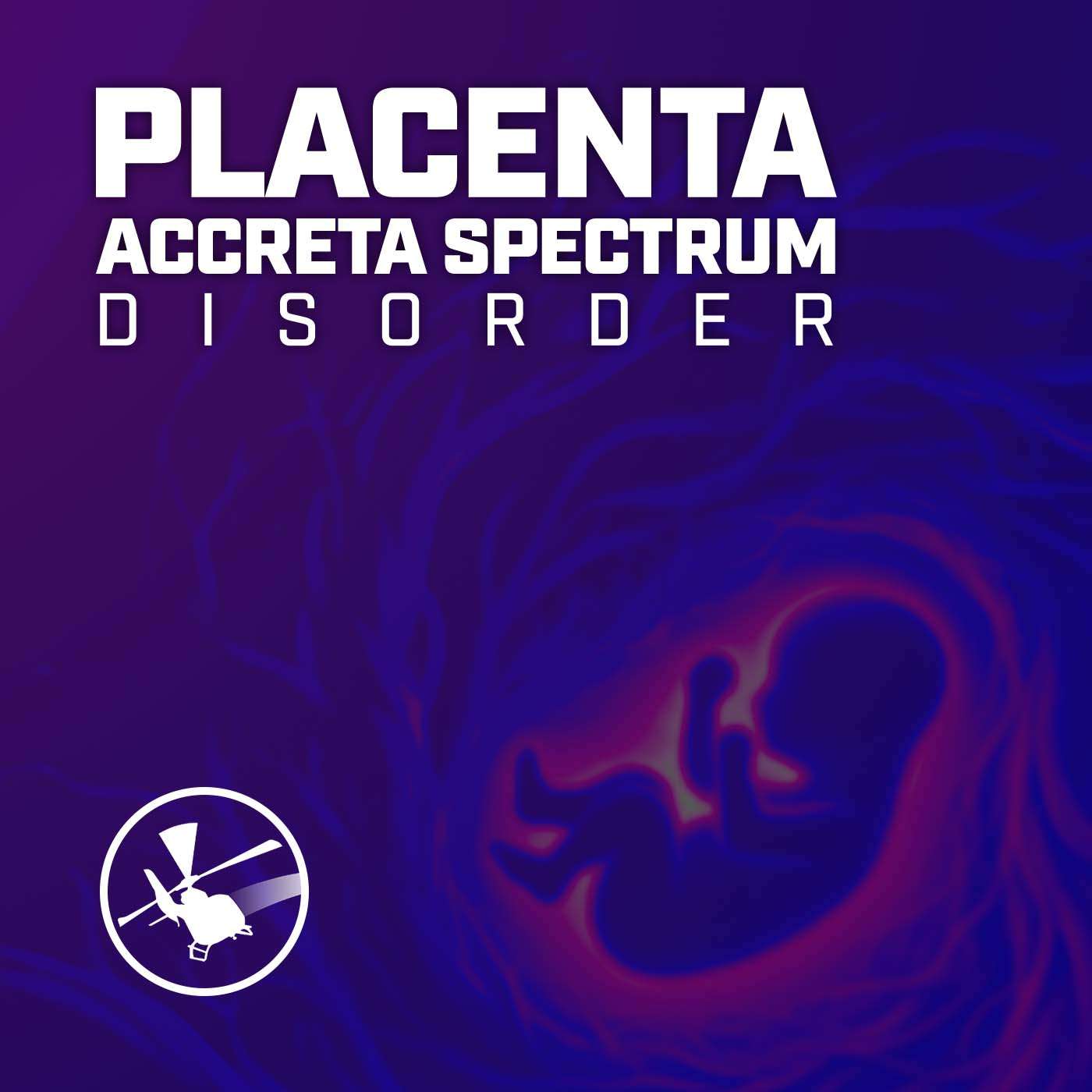





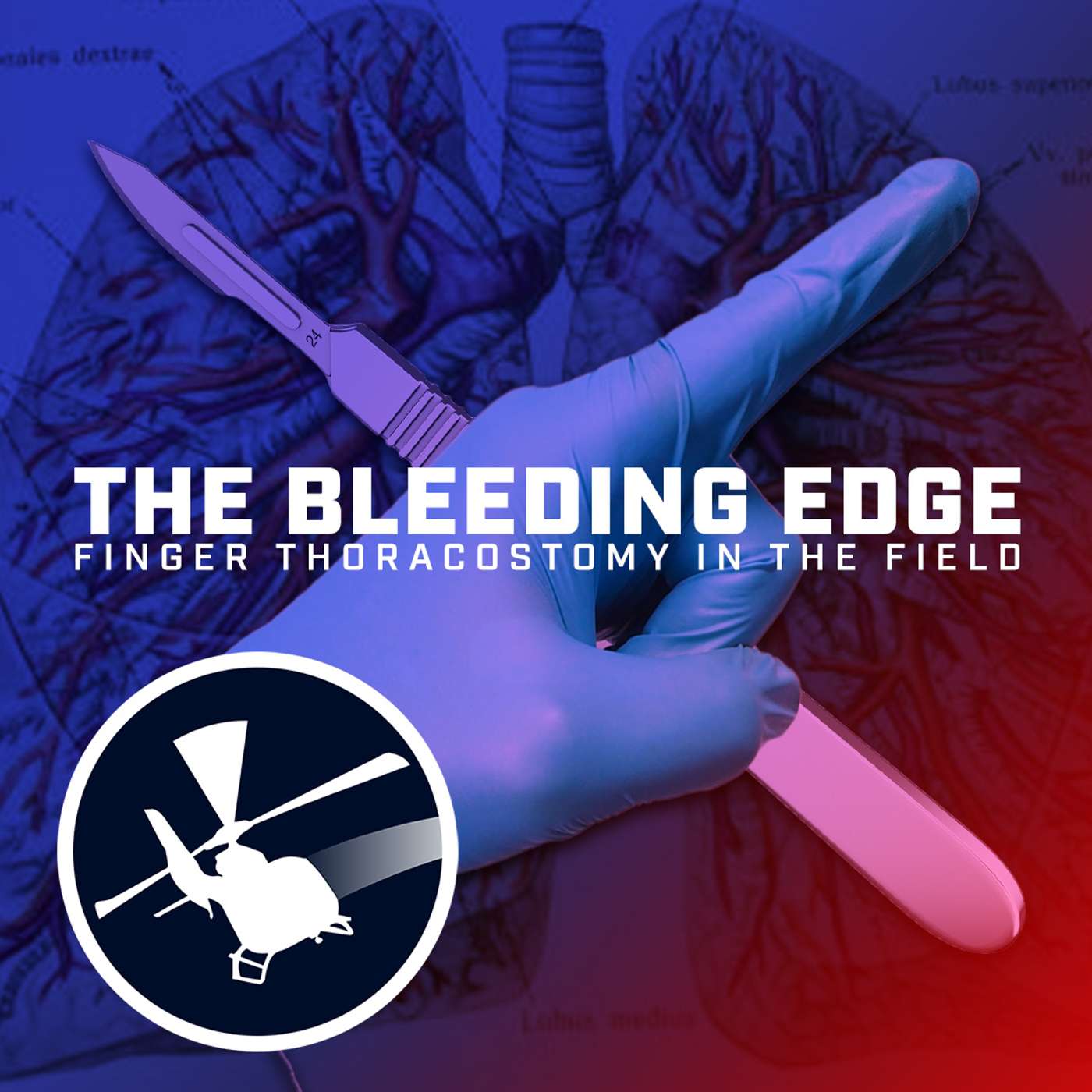




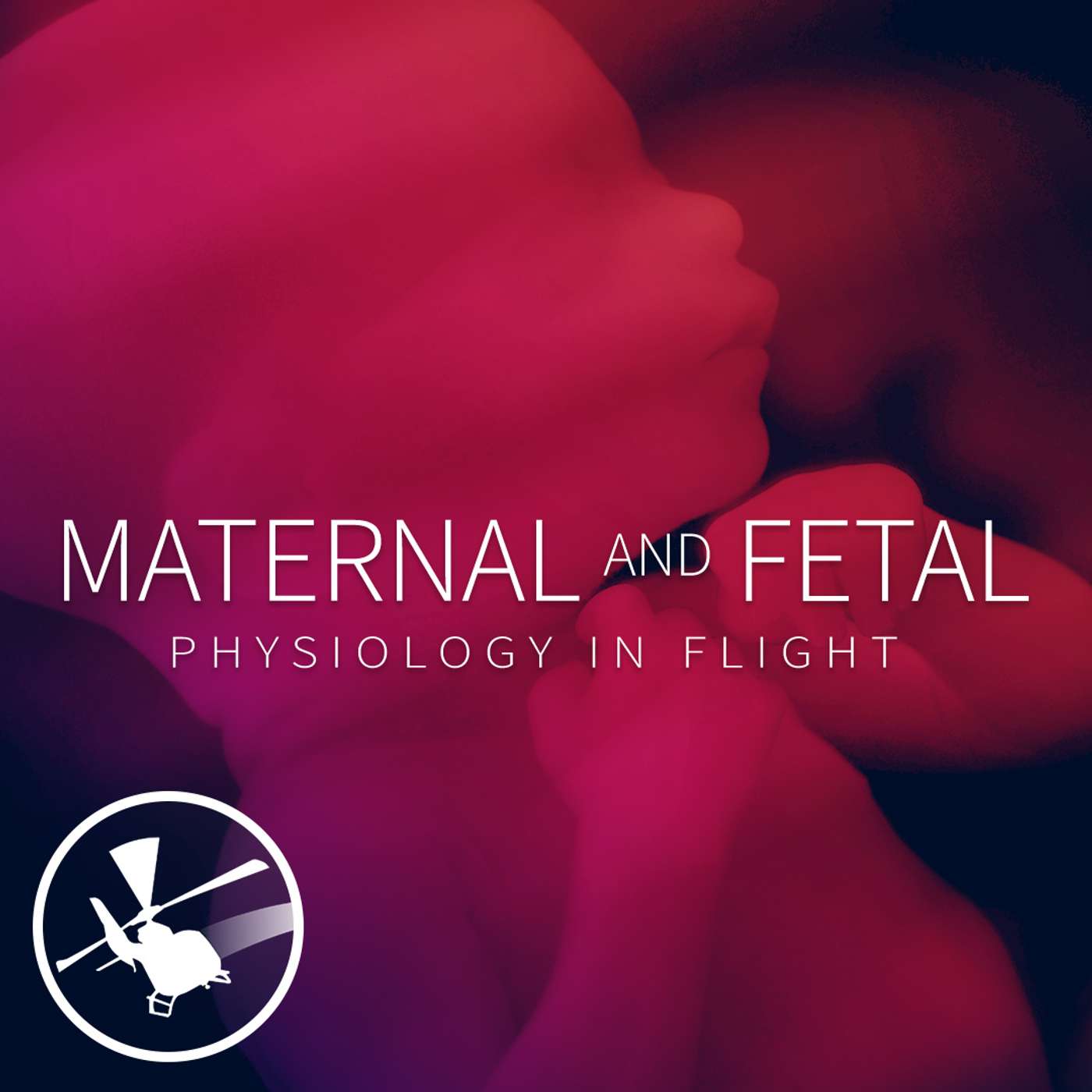



Thank you for your podcasts! They have been very helpful!
I have been a flight nurse for 32 years and really I hate to say "enjoyed" this podcast, but it really made an impression on me. I will be reviewing emergency procedures during my next shift
Flight ridge